Abstract
Using cutaneous electrodes an electrogastrographic study was made of gastric myoelectrical activity in both the fasting and postprandial states in 48 patients with unexplained nausea and vomiting and in 52 control subjects. A gastric emptying study, using a radio-labelled solid phase meal, was carried out in 30 of these 48 patients. A follow up study was done after one year. In 48% of the patients abnormal myoelectrical activity was found which was characterised by: instability of the gastric pacemaker frequency; tachygastrias in both the fasting and postprandial states; the absence of the normal amplitude increase in the postprandial electrogastrogram. This last characteristic was correlated with a delayed gastric emptying of solids. The present study shows that with electrogastrography in a heterogeneous group of patients with unexplained nausea and vomiting a subgroup can be discerned with abnormal myoelectrical activity. Our findings suggests that this abnormal myoelectrical activity is related to these symptoms.
Full text
PDF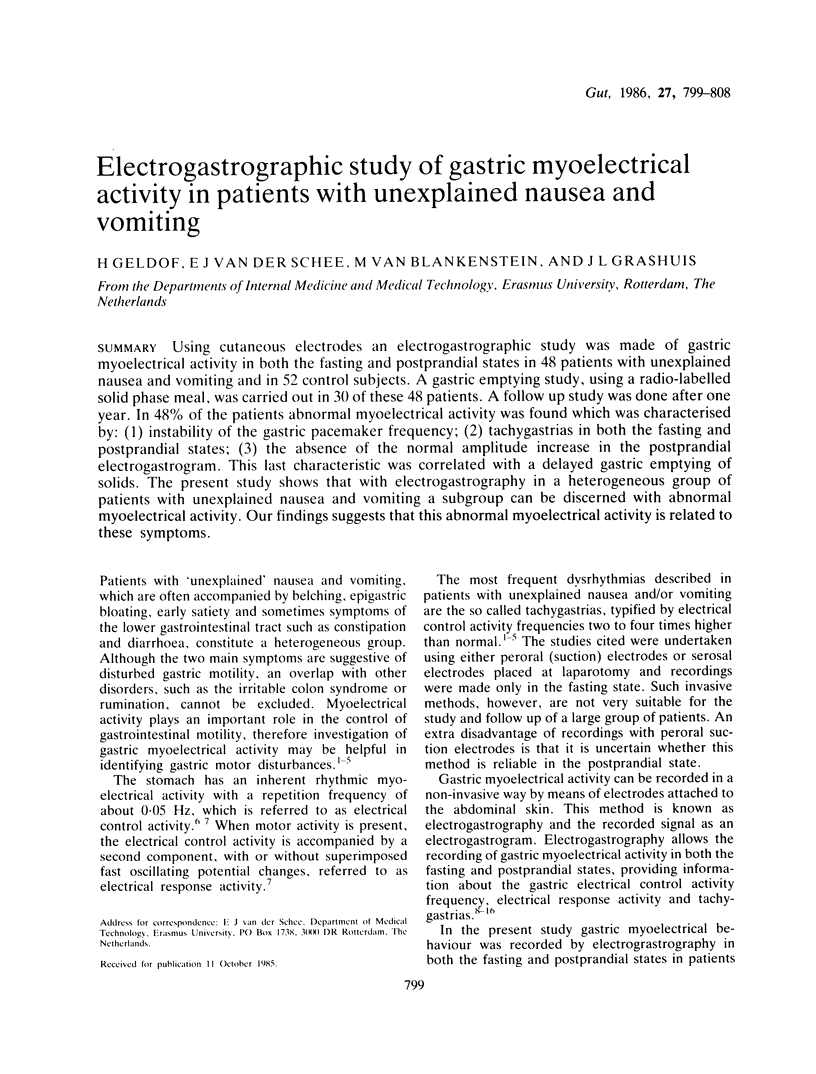
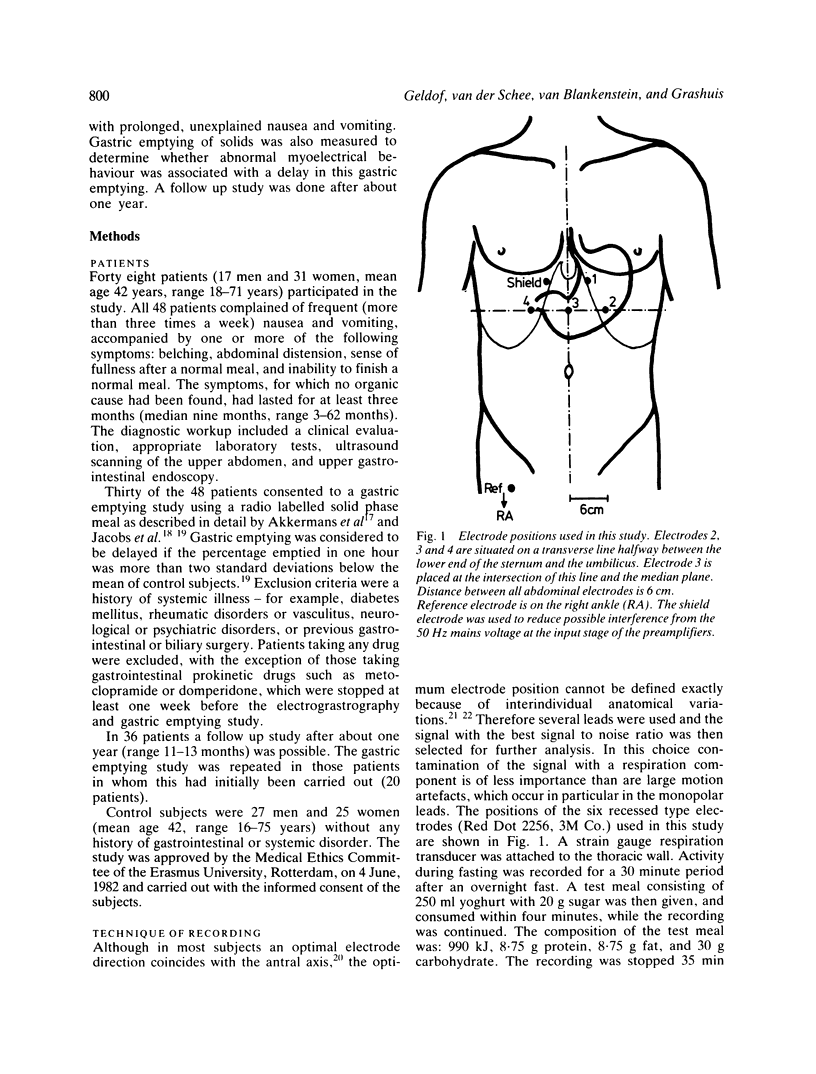
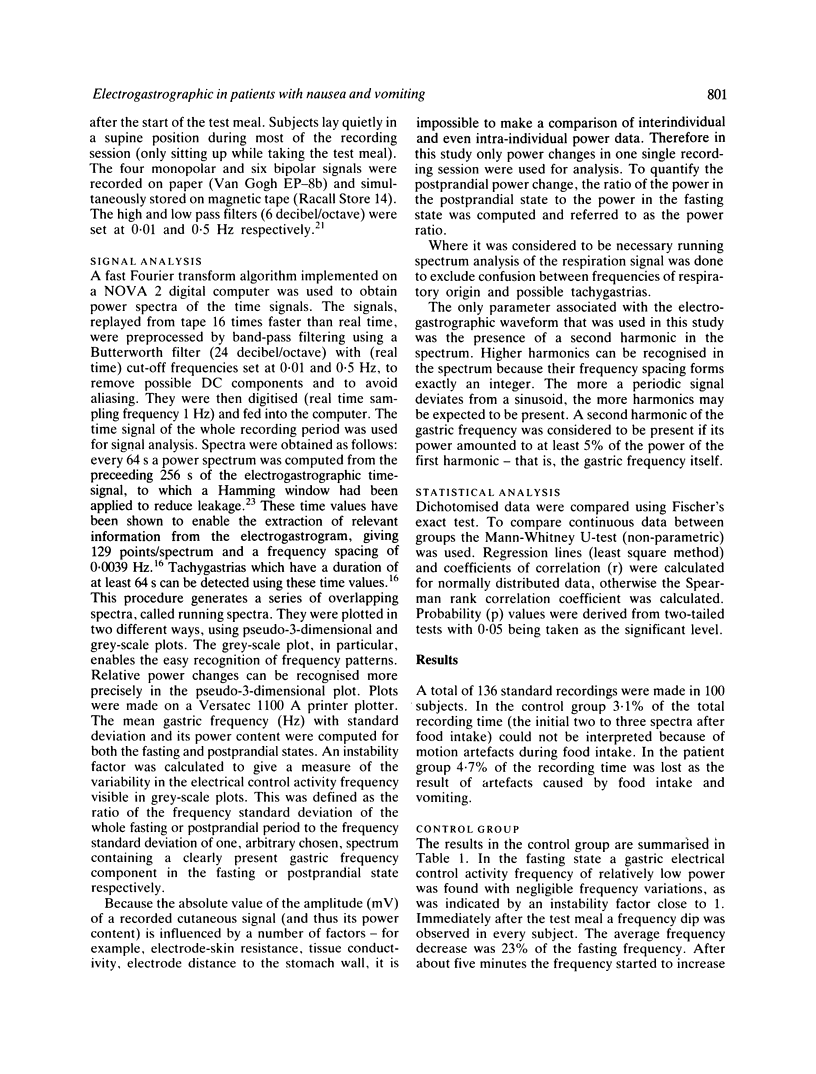
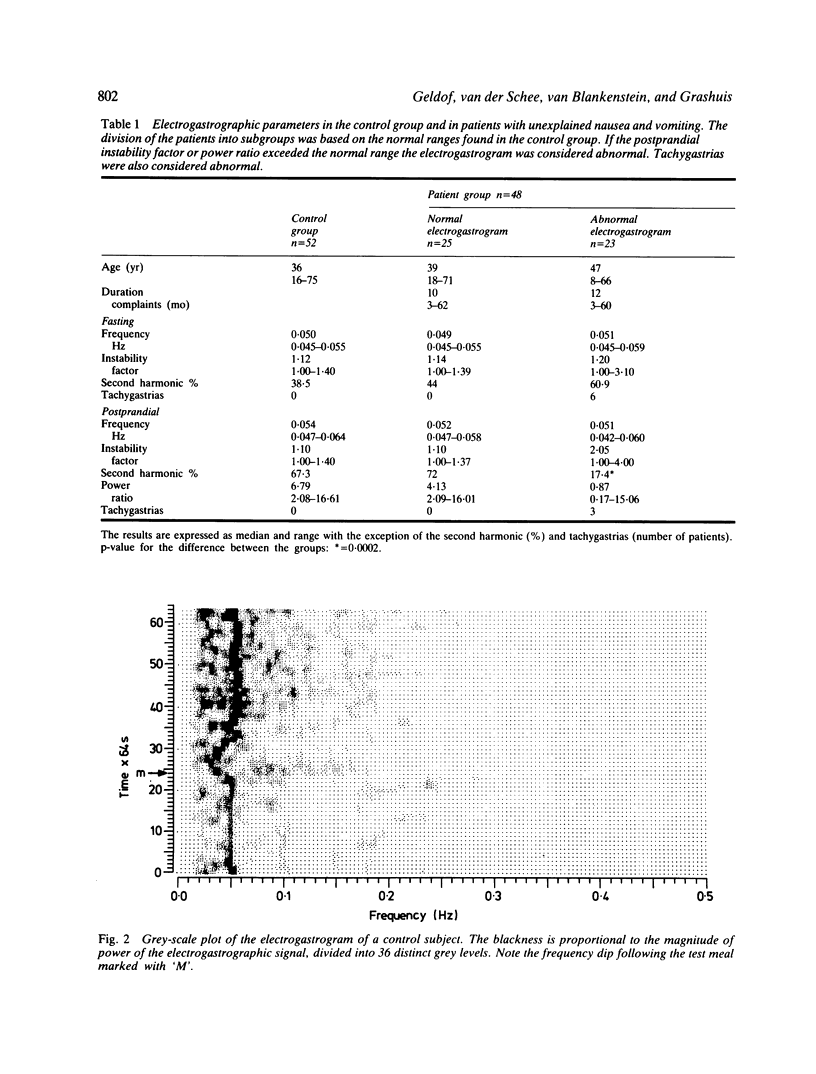
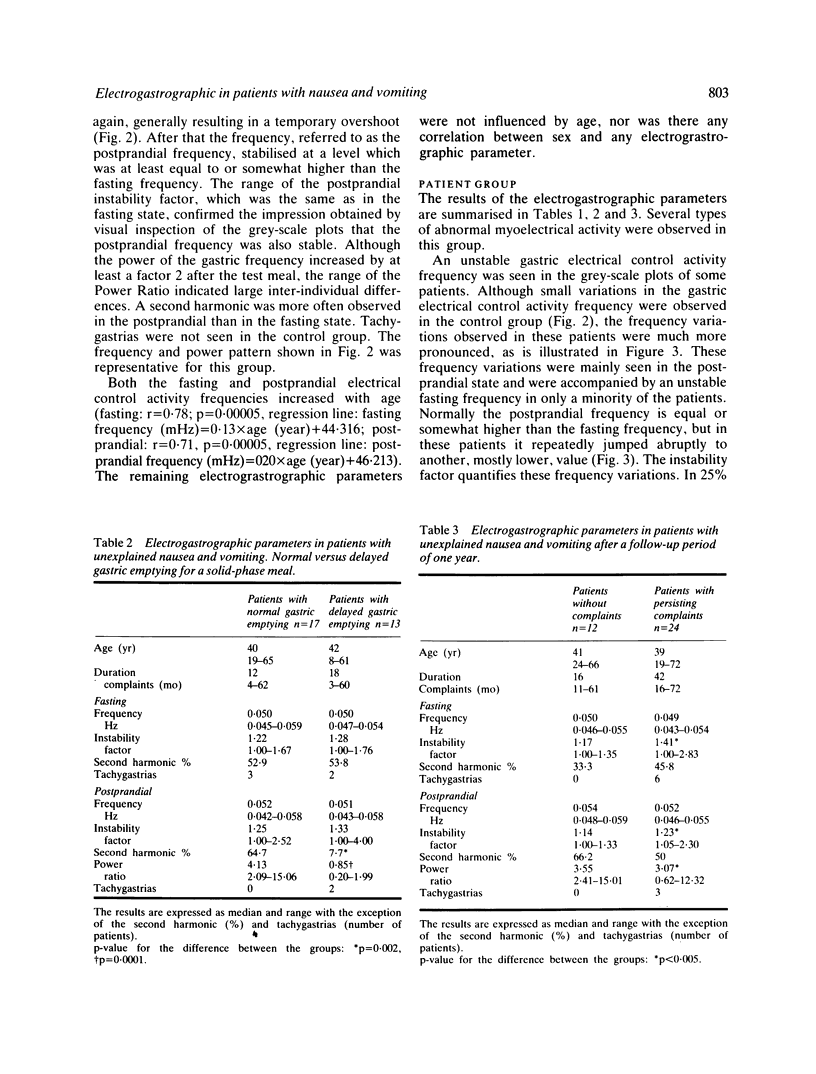
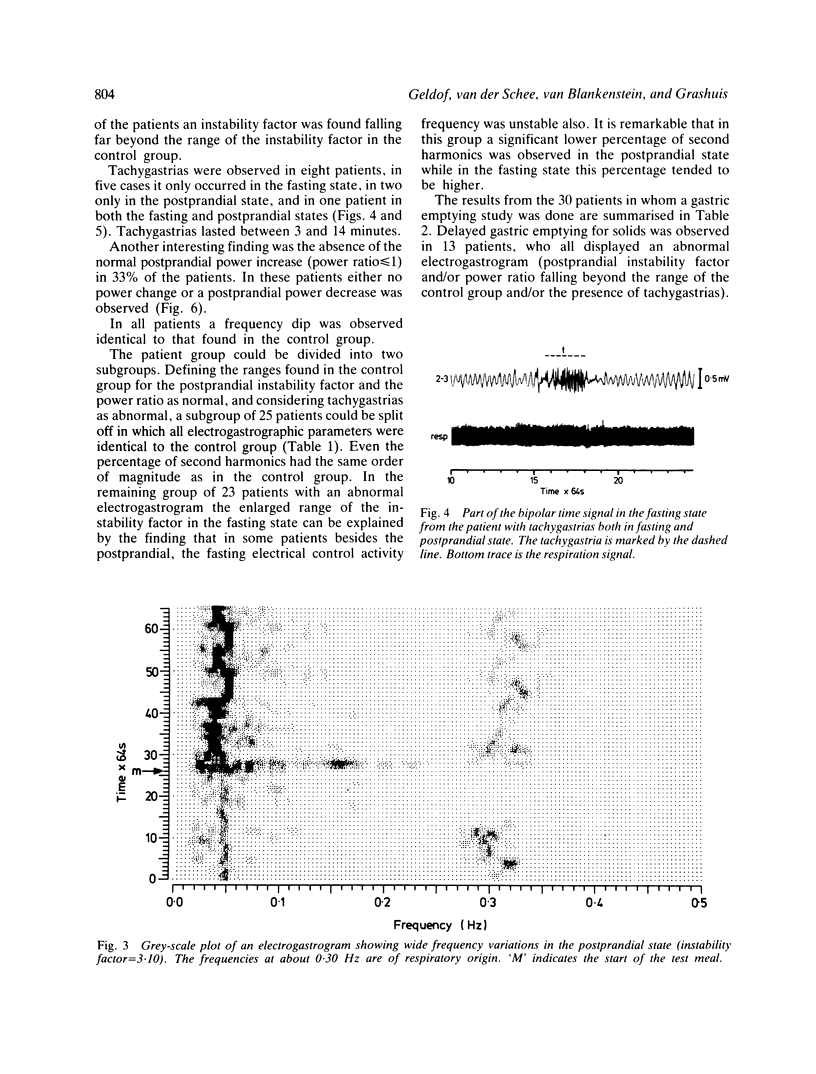
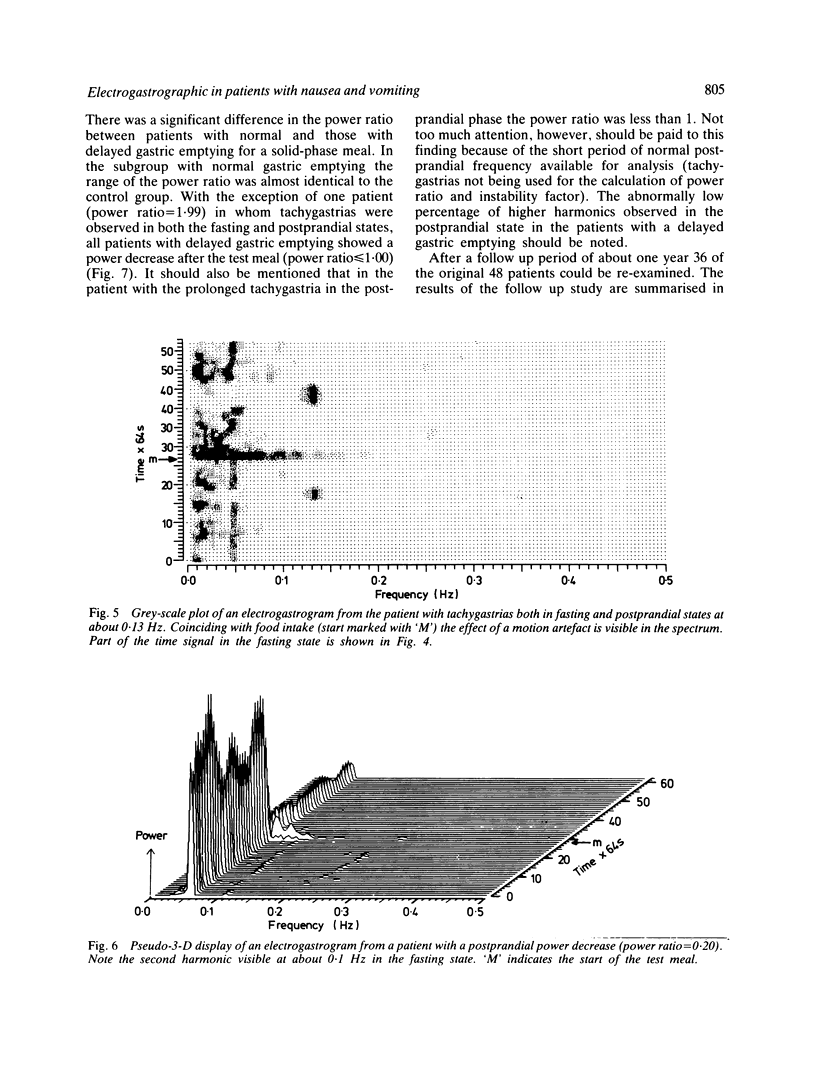
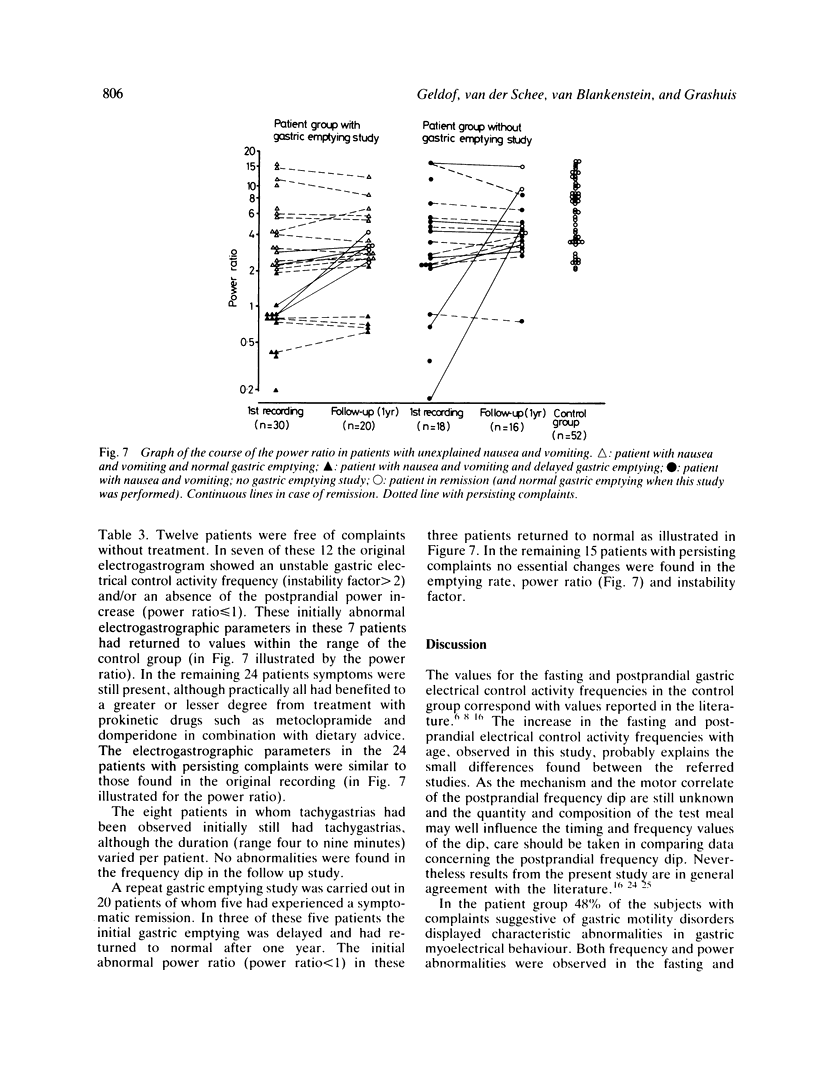
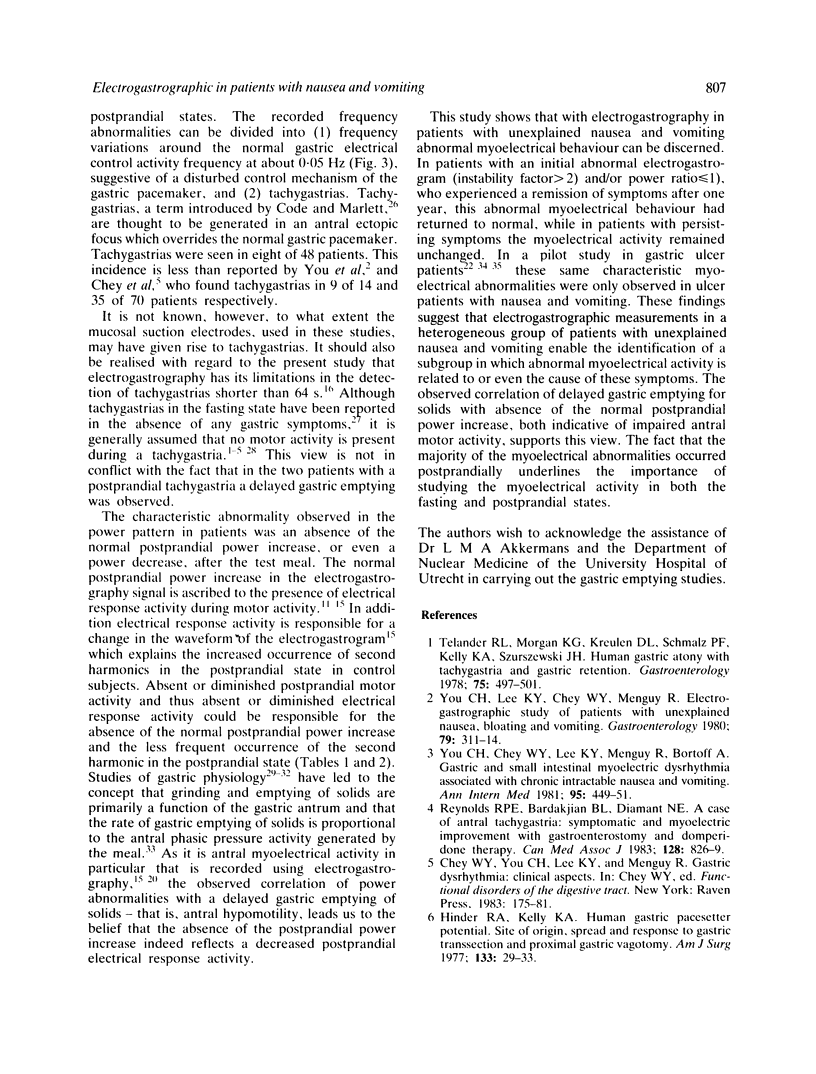
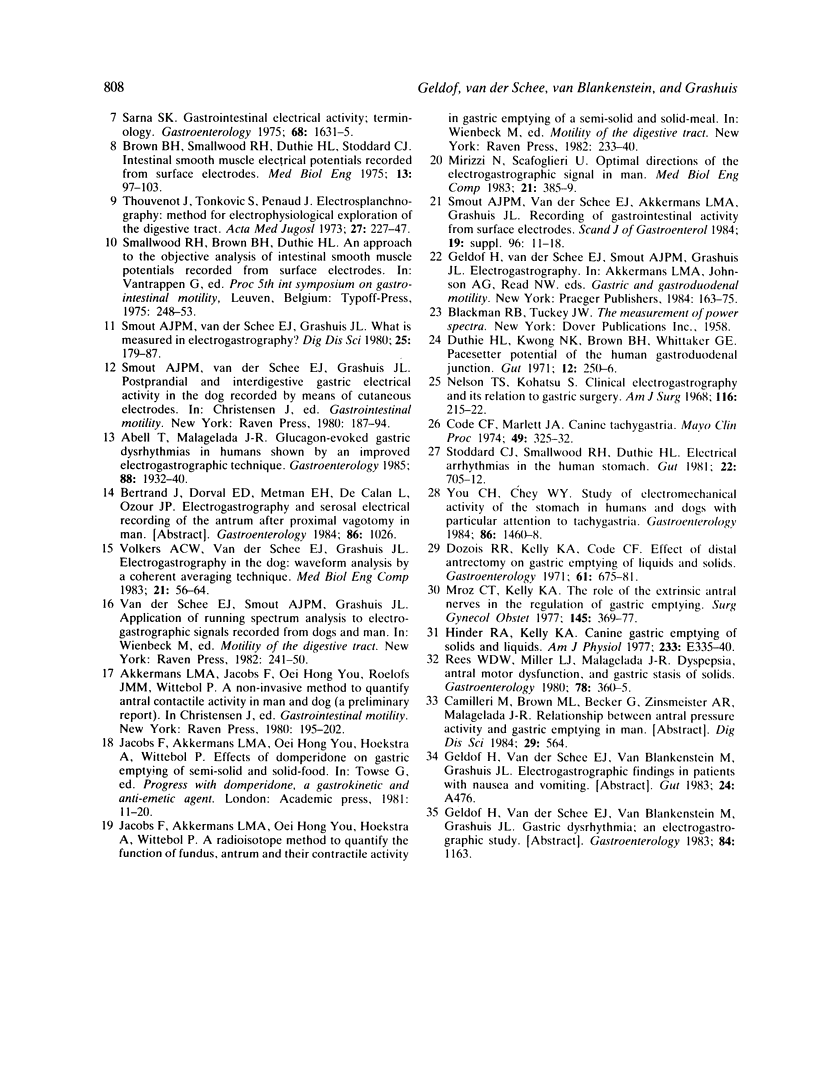
Selected References
These references are in PubMed. This may not be the complete list of references from this article.
- Abell T. L., Malagelada J. R. Glucagon-evoked gastric dysrhythmias in humans shown by an improved electrogastrographic technique. Gastroenterology. 1985 Jun;88(6):1932–1940. doi: 10.1016/0016-5085(85)90022-8. [DOI] [PubMed] [Google Scholar]
- Brown B. H., Smallwood R. H., Duthie H. L., Stoddard C. J. Intestinal smooth muscle electrical potentials recorded from surface electrodes. Med Biol Eng. 1975 Jan;13(1):97–103. doi: 10.1007/BF02478194. [DOI] [PubMed] [Google Scholar]
- Code C. F., Marlett J. A. Canine tachygastria. Mayo Clin Proc. 1974 May;49(5):325–332. [PubMed] [Google Scholar]
- Dozois R. R., Kelly K. A., Code C. F. Effect of distal antrectomy on gastric emptying of liquids and solids. Gastroenterology. 1971 Nov;61(5):675–681. [PubMed] [Google Scholar]
- Hinder R. A., Kelly K. A. Canine gastric emptying of solids and liquids. Am J Physiol. 1977 Oct;233(4):E335–E340. doi: 10.1152/ajpendo.1977.233.4.E335. [DOI] [PubMed] [Google Scholar]
- Hinder R. A., Kelly K. A. Human gastric pacesetter potential. Site of origin, spread, and response to gastric transection and proximal gastric vagotomy. Am J Surg. 1977 Jan;133(1):29–33. doi: 10.1016/0002-9610(77)90187-8. [DOI] [PubMed] [Google Scholar]
- Mirizzi N., Scafoglieri U. Optimal direction of the electrogastrographic signal in man. Med Biol Eng Comput. 1983 Jul;21(4):385–389. doi: 10.1007/BF02442624. [DOI] [PubMed] [Google Scholar]
- Mroz C. T., Kelly K. A. The role of the extrinsic antral nerves in the regulation of gastric emptying. Surg Gynecol Obstet. 1977 Sep;145(3):369–377. [PubMed] [Google Scholar]
- Nelsen T. S., Kohatsu S. Clinical electrogastrography and its relationship to gastric surgery. Am J Surg. 1968 Aug;116(2):215–222. doi: 10.1016/0002-9610(68)90496-0. [DOI] [PubMed] [Google Scholar]
- Rees W. D., Miller L. J., Malagelada J. R. Dyspepsia, antral motor dysfunction, and gastric stasis of solids. Gastroenterology. 1980 Feb;78(2):360–365. [PubMed] [Google Scholar]
- Reynolds R. P., Bardakjian B. L., Diamant N. E. A case of antral tachygastria: symptomatic and myoelectric improvement with gastroenterostomy and domperidone therapy. Can Med Assoc J. 1983 Apr 1;128(7):826–829. [PMC free article] [PubMed] [Google Scholar]
- Sarna S. K. Gastrointestinal electrical activity: terminology. Gastroenterology. 1975 Jun;68(6):1631–1635. [PubMed] [Google Scholar]
- Smout A. J., Van der Schee E. J., Akkermans L. M., Grashuis J. L. Recording of gastrointestinal electrical activity from surface electrodes. Scand J Gastroenterol Suppl. 1984;96:11–18. [PubMed] [Google Scholar]
- Smout A. J., van der Schee E. J., Grashuis J. L. What is measured in electrogastrography? Dig Dis Sci. 1980 Mar;25(3):179–187. doi: 10.1007/BF01308136. [DOI] [PubMed] [Google Scholar]
- Stoddard C. J., Smallwood R. H., Duthie H. L. Electrical arrhythmias in the human stomach. Gut. 1981 Sep;22(9):705–712. doi: 10.1136/gut.22.9.705. [DOI] [PMC free article] [PubMed] [Google Scholar]
- Telander R. L., Morgan K. G., Kreulen D. L., Schmalz P. F., Kelly K. A., Szurszewski J. H. Human gastric atony with tachygastria and gastric retention. Gastroenterology. 1978 Sep;75(3):497–501. [PubMed] [Google Scholar]
- Thouvenot J., Tonković S., Penaud J. Electrosplanchnography--method for the electrophysiological exploration of the digestive tract. Acta Med Iugosl. 1973;27(3):227–247. [PubMed] [Google Scholar]
- Volkers A. C., van der Schee E. J., Grashuis J. L. Electrogastrography in the dog: waveform analysis by a coherent averaging technique. Med Biol Eng Comput. 1983 Jan;21(1):56–64. doi: 10.1007/BF02446407. [DOI] [PubMed] [Google Scholar]
- You C. H., Chey W. Y., Lee K. Y., Menguy R., Bortoff A. Gastric and small intestinal myoelectric dysrhythmia associated with chronic intractable nausea and vomiting. Ann Intern Med. 1981 Oct;95(4):449–451. doi: 10.7326/0003-4819-95-4-449. [DOI] [PubMed] [Google Scholar]
- You C. H., Lee K. Y., Chey W. Y., Menguy R. Electrogastrographic study of patients with unexplained nausea, bloating, and vomiting. Gastroenterology. 1980 Aug;79(2):311–314. [PubMed] [Google Scholar]


